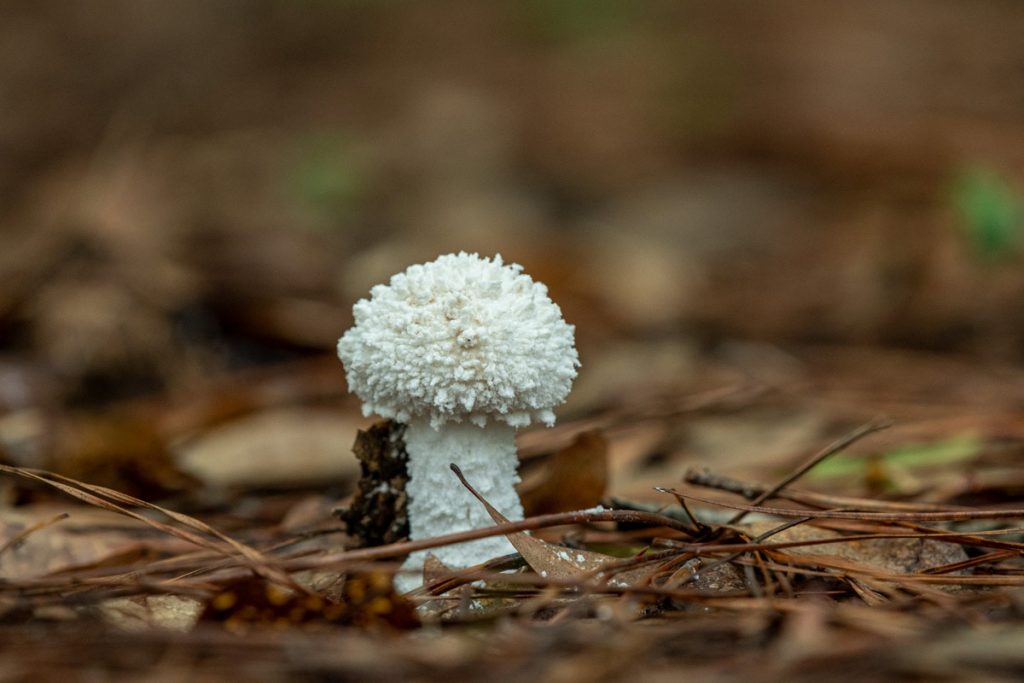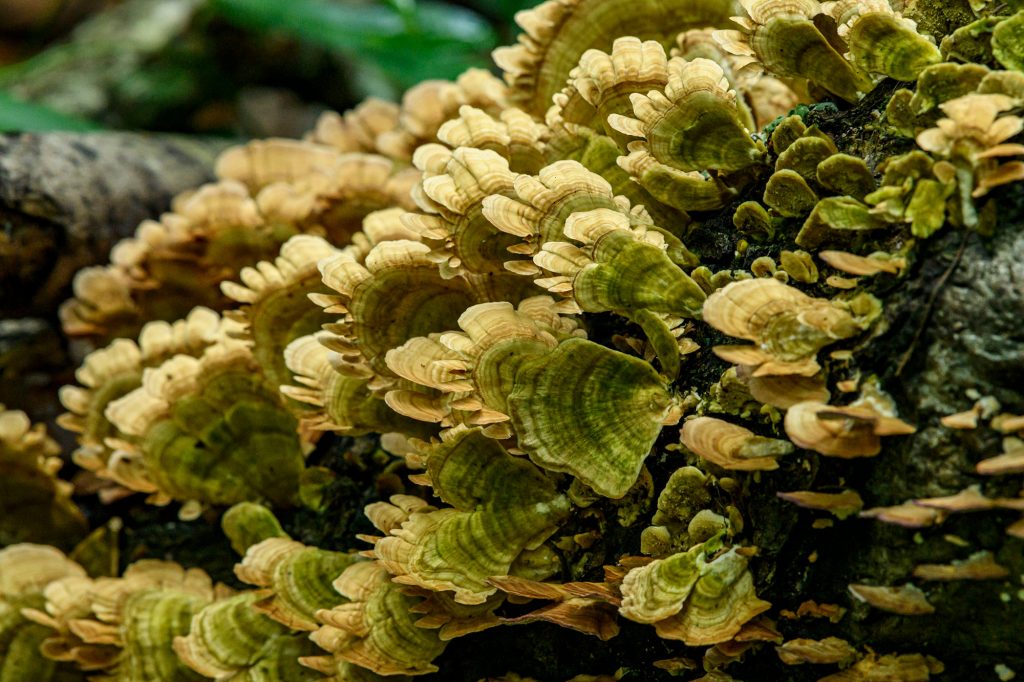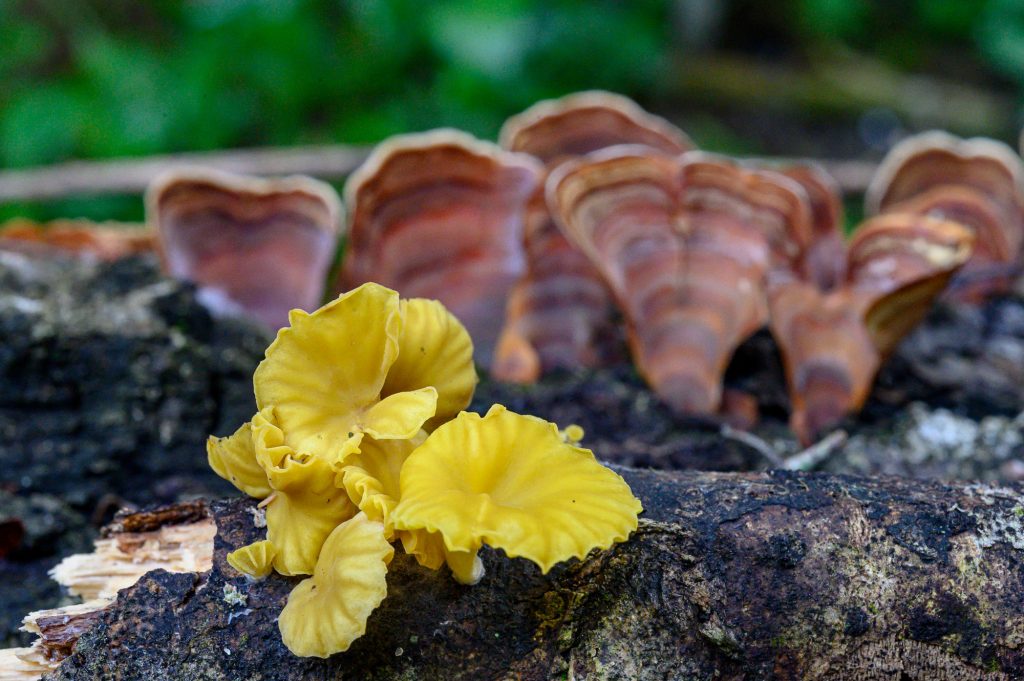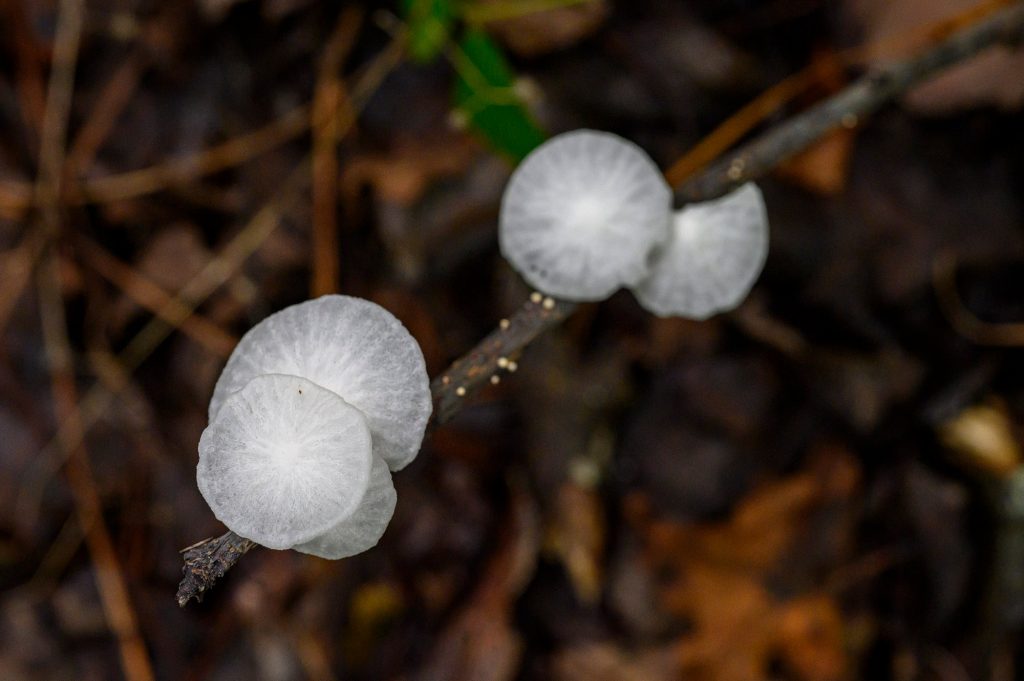What came first the lichen or the mushroom? How do we know if a mushroom is safe to eat? What is the future of mushrooms on a changing planet?
These are just a few of the thoughtful questions that populated the Zoom chat space during the very first VIRTUAL Mushrooms with the Museum event on Sunday, August 16, 2020.
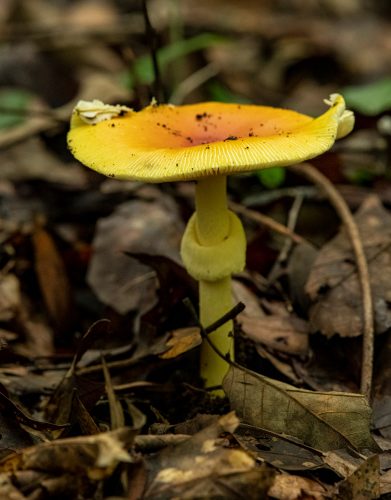
During this event, panelists Matthew E. Smith (Associate Professor, UF Dept. Of Plant Pathology), Roseanne Healy (Assistant Scientist, UF Dept. Of Plant Pathology), Alija Bajro Mujic (Assistant Professor, Department of Biology, California State University, Fresno), Ross Joseph (Doctoral Student, UF Department of Microbiology and Cell Science) and Sarah Prentice (F.A.L.A.F.E.L. Organizer) spoke to a virtual audience of 300 people about the biology, diversity, identification and even the cooking of mushrooms!
The event kicked off with Ross and Roseanne breaking down the basics. What’s a fruiting body? What’s the deal with spores? How do mushrooms get their energy? We also heard about how mushrooms are more closely related to animals than they are plants! Who knew?!
Roseanne finished up by giving us an explanation of mushroom reproduction and a quick, but thorough demonstration on how to make your own spore prints. By using the spore print cards in the resource section, all you need is a mushroom and you’ll be all set to make your own print at home.
Next up, truffle extraordinaire, Matt polled the audience about the diversity of mushrooms, asking if viewers knew about how many known/named species of fungi there are. If you guessed over 100,000, then you are correct! Matt and Alija go on to explain how there are actually a LOT more than 100,000 species. We know this from the scientific work done by researchers and DNA sequencing from substrates like soil. Most mycologists agree a reasonable estimate is actually closer to 1.5-5 million species! Mind = blown. Alija helped us to understand why fungi can be difficult to study and why there is so much left for mycologists to learn.
Lots of folks throughout the event were sending us questions about identification, collecting and eating mushrooms. So after taking some questions halfway, we spent the second half of the event exploring just that.
Matt moved us into the next section by explaining how mycologists use dichotomous keys, staining and microscopy to identify mushrooms. He even showed us a quick video on how to look at fungi under a microscope. While some of these tools are accessible to the general public, Matt always stresses the importance of never consuming a wild mushroom that you cannot positively identify as edible. When in doubt, throw it out!
As someone who frequently takes the public on mushroom forays, Sarah jumped in next to explain a few of the many mushroom myths that she busts through her work with F.A.L.A.F.E.L. Did you know picking a mushroom doesn’t kill the fungus? We found out via a poll that our viewers most certainly did!
In our humble opinion as organizers and experts, we figured we couldn’t spend an hour talking about mushrooms without eating and cooking them. We closed the event with Alija, who surprisingly enough, was a chef way before he was a mycologist! Alija walked us through the process of dry sautéing mushrooms to achieve the best texture and flavor. I don’t know about our viewers, but this portion of the event made me hungry, and believe it or not, I tried this cooking method for myself after the event and it checks out.
The event ended with questions from the audience and a review of the resources referenced throughout the event.
Resources
- Fungal ID Services
- Guidelines for submitting fungi for identification
- Keys to the Major Groups of Fungi
- Spore Print Cards
- Mushroom Morphology
